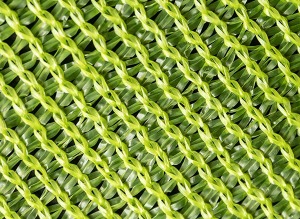In modern agriculture and urban gardening, pest control remains one of the biggest challenges. Chemical pesticides, though effective, come with environmental costs and health risks. Enter the insectnet—a silent, chemical-free warrior revolutionizing the way we protect crops and green spaces.

The insectnet is a mesh barrier made of fine, durable material designed to exclude insects without hindering air and light penetration. Whether it’s covering a large greenhouse or a modest balcony garden, the insectnet plays a crucial role in sustainable pest management.
In commercial farming, especially organic farming, the insectnet is used to protect crops from flying pests like whiteflies, aphids, moths, and beetles. These pests not only damage crops but also carry diseases. By using an insectnet, farmers significantly reduce crop loss and minimize the need for chemical treatments.
Urban gardening has also seen a rise in insectnet usage. City dwellers who grow vegetables or herbs on rooftops or balconies rely on the insectnet to create a protective micro-environment. It prevents bugs from settling on leaves or laying eggs in the soil, thereby improving the overall health and yield of plants.
Beyond pest control, the insectnet offers other vital functions. It can act as a windbreak, reduce sun scorch by diffusing light, and even help regulate temperature inside growing structures. The insectnet is truly multifunctional, making it a key component in climate-smart agriculture.
What sets the insectnet apart from traditional methods is its long-term effectiveness. Once installed, a quality insectnet can last several seasons with minimal maintenance. Its upfront cost is easily justified by the reduction in pesticide expenses and the improved quality of produce.
Farmers and gardeners also appreciate the eco-friendliness of the insectnet. It aligns perfectly with the goals of organic certification and sustainable agriculture. By replacing synthetic sprays with physical barriers, the insectnet helps maintain soil health, protect pollinators, and reduce the risk of pesticide runoff into water sources.
Different crops require different mesh sizes and net types. For example, a vineyard may use a coarser insectnet to keep out larger pests like wasps or birds, while leafy greens may need a finer mesh to prevent the intrusion of tiny insects. Manufacturers now offer insectnet solutions tailored for various climates and crop types.
Additionally, innovation in insectnet technology has introduced nets with added UV protection, antimicrobial coatings, and biodegradable materials. These enhancements increase the lifespan of the insectnet and expand its environmental benefits. Some smart agriculture setups even include retractable insectnet systems that adapt based on time of day or weather conditions.
For community gardens and school-based agricultural programs, the insectnet serves as an educational tool. Children learn about sustainable farming practices, pest control, and ecosystem balance—all while watching their plants grow in a bug-free environment. The visibility of the insectnet also makes it easier to inspect for any tears or breaches that need fixing.
The insectnet is not just a protective mesh—it is a foundation of modern, sustainable agriculture. Whether you’re a commercial farmer or a balcony gardener, incorporating an insectnet into your practice ensures healthier plants, safer food, and a cleaner environment. As more people embrace eco-conscious living, the insectnet stands out as an essential tool in the green revolution.



 英语
英语 西班牙语
西班牙语










